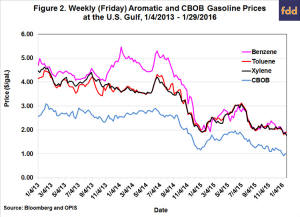|
 A quick review of the 2015 harvest season shows that yields on
corn, which appears to be the predominant crop in Logan County, were
down considerably over 2014 and 2015. The price per bushel at the
elevator was also down, making for a “lose-lose” situation for
farmers in the Midwest, and particularly in the heart of Illinois. A quick review of the 2015 harvest season shows that yields on
corn, which appears to be the predominant crop in Logan County, were
down considerably over 2014 and 2015. The price per bushel at the
elevator was also down, making for a “lose-lose” situation for
farmers in the Midwest, and particularly in the heart of Illinois.
What was the cause? There are several factors playing into this new
recession in the Ag industry.
The weather did play a big role in production this year as heavy
rains in the early growing season drowned out fields, and affected
yields on a large portion of Logan County Farms. The end result, an
average yield that was about 50 bushels per acre lower than 2014 and
also lower than the national average.
In the big picture, this might be a good thing. How can that be?
Because we are experiencing record stockpiles of corn in the U.S.,
and that goes back to the basic economic rule of supply and demand.
The value will drop as supply increases, and this is a part of the
reason grain crops are falling consistently.
But why do we have such a supply, with little demand?
There was a time when the local agricultural community only knew
what was going on at the local elevator, and there was less
understanding of how the world markets and world trade impact local
farms. Today we have, through technology, a greater understanding of
the role the world plays in our local economy. And the world is not
in good shape.
 The U.S dollar is strong in the world markets right now, and that
should be a good thing, but for foreign buyers it is not. Because we
have added value to our currency, countries like China that are
suffering a very weak economy right now, cannot afford to purchase
our products.
According to an article written by Philip Abbot, Professor of
Agricultural Economics at Purdue University, “The reduction in
export sales is a key influence on sharply lowering U.S. farm
income.” He goes on to state that Ag exports dropped $12.6 billion
in 2015 compared to 2014, and he predicts additional declines in
2016.
Because the dollar is strong, according to a podcast delivered by
Logan County farmer Bill Graff on February 8th, U.S. currency is a
commodity and foreign countries are in a crunch because they don’t
have the dollar, and they need it to rebuild their economies.
Graff said that the reason they are missing dollars is because the
U.S. has become less dependent on foreign oil. He noted that as the
U.S. works to provide its own energy resources, it is buying less
oil from foreign countries, deflating the value of the product, and
also creating a cash crunch in those countries, that is ultimately
having a circular effect and impacting the U.S. in a negative way.
So, is the answer that the U.S. should back off on its fuel
production? Some are afraid that it could go that direction,
especially with ethanol. If oil is cheap, and foreign trade needs
our dollars to rebuild their economies, will the U.S. back off on
the production of grain fuels? And if that happens, what will be the
impact on Logan County farmers? More grain with less marketing
options equates to higher supply and lower prices, and here we go
again.
Low yields and low prices make farmers a high risk
In Graff’s podcast number 120 – “Farm Finances, it's ugly out there”
posted at the end of December, he noted that it is a fact that 70 to
80 percent of Illinois farmers lost money in 2015 based on their
accrual accounting.
In that accounting process, those farmers looked not only at the
decrease in yields and dollars per bushel but also at the deflation
of their longer term assets. Grain in the bin was worth less in
October of 2015 than in October of 2014. Those who were holding on
to older crop as their rainy day umbrella were seeing holes punched
in the canvas, and the profits were running out like water.
 With 2015 being less than a break-even year on a cash basis, fewer
investments were made in farm machinery. That equated to older
equipment on the asset sheet, and again a decrease in value, and a
decrease in net worth.
Land prices are also falling. According to Graff’s podcast, the year
of $14,000 per acre land has passed, and in 2015 land prices fell by
about 7 percent. Land is often considered to be the wealth of the
farm, but if the value is depleting, then so is the wealth.
In January of this year, United States Congressman Darin LaHood held
a roundtable discussion in Logan County, calling together farmers
and agricultural suppliers throughout his district to create an
agriculture advisory committee of his constituents.
In that meeting, there were several who expressed concern over the
economy, and one attendee noted that the Central Illinois farmer is
going to be considered a high risk in the banking industry this
year. He noted that the bank may go along with financing operating
costs for one more year, but if the downward spiral continues, that
banker will probably not go the second year.
So what is the solution to this downward spiral? Short answer – quit
farming. Seriously. Even Graff noted that he lost money in 2015 and
was willing to lose money in 2016 if it works out that way, but he
said he would not do it in 2017.
For some of the small farmers with less than a thousand acres, it
may be time to look at becoming a landlord. While cash rents also
appear to be on a downward trend, there is still money in cash rent
for the landlord. With even 500 acres in the low one-third land
quality bracket price of $275 an acre, as noted in John Fulton’s
introduction, the landowner can yield $137,500. After taxes, and
depending on if there are current farm loans to pay off, this could
bring in enough cash for the family household. The idea is that the
larger farmers can better handle the risk than the small farm.
Considering the risk involved in being unable to pay a bank loan,
that ultimately over the next year or two could even lead to
bankruptcy, it is a reasonable option, for the small farmer.
For the larger producer, this may not be the best option simply
because they have too much invested in their operation, and to
simply stop farming would not solve their financial issues. That
will mean that these farms must determine how to reduce the
operating costs while producing a crop, and hope that the prices
will eventually come back up.
Graff mentioned in his podcast that one plan is to plant with a
lower plant population, thus reducing seed costs. Another idea, be
conservative in chemical applications and plan on running that
combine another year even though it is depreciating. Also, this may
be the year not to contract fertilizer and other inputs.

Buying early can often result in lower pricing, but will it this
year? When we buy early, we are guaranteeing the demand for a
product. This could be a year to offer no guarantees. If the
manufacturers cannot see that demand on the books, will they respond
by lowering prices? Probably so.
And, as frightening as this may sound, our future as a farming
industry may depend much on the federal government. LaHood recently
announced that he will co-chair a U.S. and China Working group. The
goal is to build the diplomatic relationship between the U.S. and
China and strengthen both economies. If this program proves to be
successful, it could have a positive impact on many of the economic
sectors of the U.S., including agriculture.
[to top of second column] |

LaHood is also optimistic about improving trade relationships with
Cuba and noted that trade with Cuba would be good for Illinois
farmers, as well as the Illinois-based manufacturer, Caterpillar.
Another program that sounds good in theory is the Trans-Pacific
Partnership (TPP). Again this is a program that LaHood supports
saying that it will be good for the farm economy in the Midwest. In
that plan, the U.S. may participate trade in agreements with several
countries that have borders on the Pacific. Among those are Japan,
Vietnam, Singapore, Brunei, Malaysia, Australia, New Zealand, Chili,
Peru, Mexico, and Canada.
The TPP has met with some negative feedback based on its
composition. The partnership agreement covers a wide range of
issues: pharmaceutical regulations, state-owned industries, foreign
investment, labor rights, environmental protections, copyright law,
government procurement, e-commerce, and more. Opponents of the
partnership say there is too much restriction, and that it will have
a negative impact on some very important world issues such as
digital innovation and the global effort to combat AIDS.
However, proponents of the agreement say that it will open trade
doors for the U.S. by lowering some of the barriers that are now in
place, and make trade with the U.S. more affordable and more
attractive to the partnership members.
Hanging our hopes on ethanol
And finally, the future of ethanol is still strong, and must be
exploited for the sake of the family farm. According to the
Renewable Fuels Association in November of 2014 and March of 2015,
ethanol exports topped out at 84 million gallons. From March 2015 to
August 2015 the exports dwindled down to a mere 34 million gallons.
However, in January of this year, the U.S. hit a new all-time high
when the exports totaled 87.1 million gallons. Notably, one-third of
that market was purchased by China.
Production of biofuels will continue to grow according to mandates
passed by the federal government. The Energy Independence and
Security Act of 2007 outlines the growth of renewable fuels to a
total of 22 billion gallons by 2022.
Though there is a mandated demand, there is also concern about the
price at the pump and whether or not consumers will purchase ethanol
when gasoline is less expensive. However, there are other factors
coming into play that offset consumer decisions.

While petroleum-based gasoline is competing strongly at the pump
with ethanol, ethanol is competing strongly with the octane
enhancers used to manufacture various octane levels of gasoline,
keeping up the demand for the grain-based product.
At the pump, gasoline products are marketed as Regular, Mid-grade,
or High-Octane. The difference in the products is the octane level
of each. That octane level is reached through the chemical compounds
commonly known as aromatics added to the gasoline at the refinery.
Aromatics used in gasoline include Benzene, Toluene, and Xylene.
In addition to these chemicals, ethanol is becoming a major player
in the gasoline additive market, because as an additive, it is
cheaper than the three chemical compounds.
In a February 3, 2016, article in Farmdoc Daily, Scott Irwin and
Darrel Good of the Department of Agricultural and Consumer Economics
at the University of Illinois offered price comparisons from January
2013 to January 29, 2016.

In the article, the authors provide a visual that demonstrates that
over the three-year period ethanol was consistently less costly than
the chemical compounds. What should also be noted on the chart is
that in November of 2013, Benzene was the most expensive aromatic at
well above $5 per gallon. Since that time, the price of all the
aromatics has fallen and in January of this year were at their
lowest. Even so, ethanol is still about half-price to the three
aromatics.
So, is it possible to conclude this article with an optimistic view?
Let’s compare ourselves in 2015 to ourselves in the 1970’s and 80’s,
rough, rough years for farming. Most of us came through then, and
most of us will come through this as well. Let us hope for higher
demand, higher yields, and higher prices, lower input costs, and
we’ll get by just fine!

Sources
Purdue Agricultural Economics Report
Outlook for the Agricultural Economy in 2016
https://ag.purdue.edu/agecon/Documents/PAER%20DECEMBER%202015%20-%20DIGITAL%20VERSION.pdf
Farm and Ranch Country
Logan County Farmer Bill Graff
http://farmandranchcountry.com/about/
123 – Strong Dollar, Cheap Oil & Farm Economy
http://farmandranchcountry.com/strong-dollar-cheap-oil-farm-economy/
Renewable Fuels Association
Ethanol Exports Surge in December; DDGS Exports Set New Annual
Record
By Geoff Cooper in E-blog Posted February 8, 2016
http://www.ethanolrfa.org/2016/02/ethanol-exports-surge-in-december-ddgs-exports-set-new-annual-record/
Farmdoc Daily
February 8, 2016 - Weekly Outlook: Exports of Ethanol and
Distillers' Grains Remain Strong
By Darrel Good Department of Agricultural and Consumer Economics -
University of Illinois
http://farmdocdaily.illinois.edu/2016/02/exports-ethanol-distillers-grains-remain-strong.html
Farmdoc Daily
February 3, 2016 - The Competitive Position of Ethanol as an Octane
Enhancer
Scott Irwin and Darrel Good
Department of Agricultural and Consumer Economics - University of
Illinois
http://farmdocdaily.illinois.edu/2016/02/ethanol-position-as-octane-enhancer.html
|